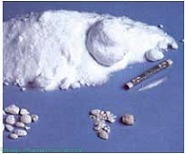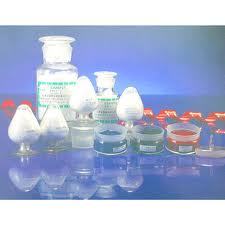Talcum Powder Purified
15 INR/Kilograms
Product Details:
- Storage Room Temperature
- Solubility practically insoluble in water,
- Heavy Metal (%) Not Available
- Smell Other
- HS Code 33049120
- Loss on Drying Not more than 0.5%.
- Shelf Life 4 Years
- Click to View more
X
Talcum Powder Purified Price And Quantity
- 15 INR/Kilograms
- 15.00 - 30.00 INR/Kilograms
- 25kgs Kilograms
Talcum Powder Purified Product Specifications
- Pharmaceutical Intermediates
- 99 percent
- not available
- talcum powder
- As a powder, it absorbs moisture well and helps cut down on friction, making it useful for keeping skin dry and helping to prevent rashes. It is widely used in cosmetic products such as baby powder and adult body and facial powders, as well as in a number of other consumer products.
- Powder
- 1500C
- light grey
- H2Mg3O12Si4
- Other
- 26.57 m
- 379.27 Grams (g)
- 14807-96-6
- 4 Years
- H2Mg3O12Si4
- Medicine Grade
- 7.2
- not available
- H2Mg3O12Si4
- Other
- Not Available
- Room Temperature
- practically insoluble in water
- Not more than 0.5%.
- 33049120
Talcum Powder Purified Trade Information
- Mumbai port
- Letter of Credit (L/C) Letter of Credit at Sight (Sight L/C) Cash Advance (CA)
- 50 Kilograms Per Day
- 7 Days
- Yes
- Free samples are available
- DRUM PACK
- Australia North America South America Eastern Europe Western Europe Middle East Africa Central America Asia
- ISO,GMP
Product Description
Talc is a mineral composed of magnesium silicate (MgSiO3) when hydrated. As an anti-caking agent in pharmaceuticals, it improves powder flow when tablets are compressed. The use of talcum products in cosmetics has been asbestos free since the 1970s.
Talcum Powder Purified Properties:
- CAS Number: 14807-96-6
- Name: Talc
- Formula: H2Mg3O12Si4
- Molecular Weight: 379.2657
- Deleted CAS: 99638-63-8
- Synonyms: Beaver White 200;Beaver White 325;CS 2 (talc);CT 8 (mineral);Emtal596;FVS;FW-XO;Fabi HTP Ultra 5C;Finntalc M 15; HTP Ultra 1C;HTP Ultra 5C;HTP-Ultra 10C;HTP-Ultra 5;HWST;HeliocoteX;Hi-Con Talc C 12;Hi-Filler;Hi-Filler 10; Finntalc M15E;Finntalc M 20SL;Finntalc M 30SL;HS-T 0.5;HST 05;HT 7000;HT 7050;HTP 05;HTP 1C;
- EINECS: 238-877-9
- Density: 2.7-2.8 g/cm3
- Melting Point: 800 °C
- Appearance: white to almost white micro fine powder
How does it work?
Powdered talcum is made from talc, which contains the elements magnesium, silicon, and oxygen. Powder absorbs moisture and reduces friction, making it effective at keeping skin dry and preventing rashes.
How to use:
Magnesium silicate (MgSiO3) is commonly called "talc" when hydrated. The pharmaceutical industry uses it as anticaking agent to improve powder flow when compressing tablets. Talc is used as an adsorbent in cosmetic products like talcum and baby powder.
Side effects:
- Cough with thick mucous
- Fast, slow, or irregular heartbeat
- General feeling of discomfort or illness
- Chest pain, discomfort, or tightness
- Coughing or spitting up blood
- Shortness of breath or troubled breathing
Warnings and precautions while using this product
You shouldn't use talcum powder on your baby. Ingredients in it can irritate their skin. Drying your baby with a soft towel is much better.
Tell us about your requirement

Price:
Quantity
Select Unit
- 50
- 100
- 200
- 250
- 500
- 1000+
Additional detail
+91
Email










 : nilesh.sheth70
: nilesh.sheth70
